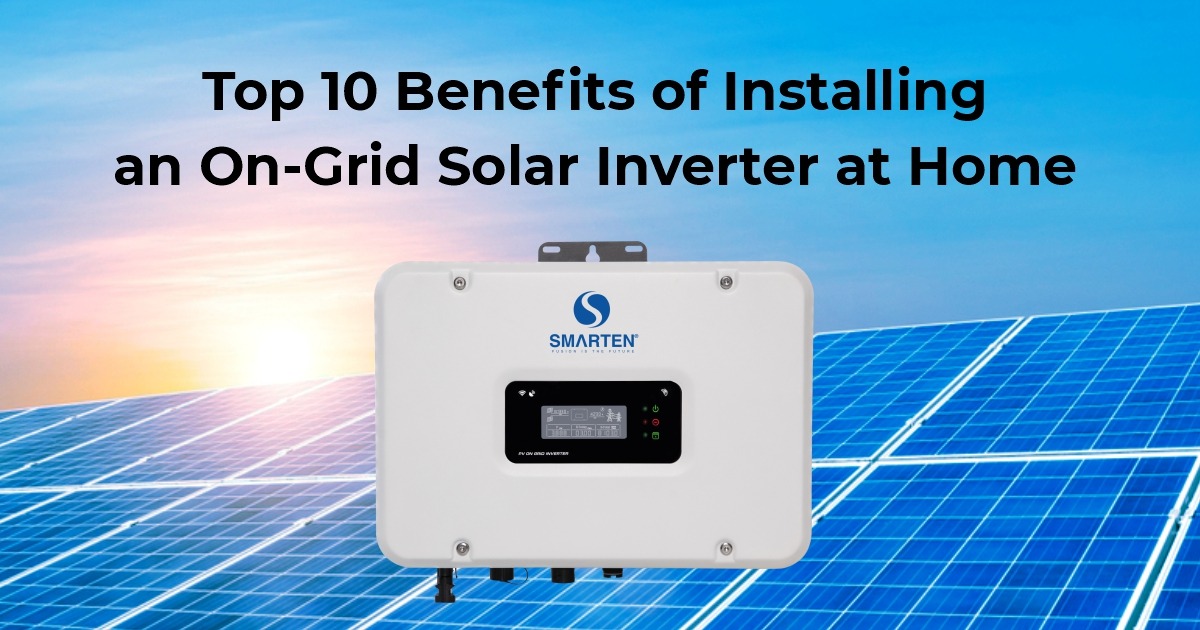
In today’s eco-conscious and cost-sensitive world, more homeowners are turning to solar power to meet their energy needs. Among the various solar systems available, on-grid solar inverters stand out as a highly efficient and financially beneficial solution. These inverters connect directly to the main utility grid, making them ideal for residential areas with consistent electricity access. But why exactly should you consider installing one?
Here are the top 10 benefits of installing an on-grid solar inverter at home:
One of the biggest advantages of an on-grid solar inverter is the extreme reduction in your monthly electricity bills. By generating power from solar energy and feeding it into the grid, your electricity consumption from the utility company decreases. In some cases, if your system generates more power than you use, you may even earn credits or payments from your utility provider.
On-grid systems typically come with the benefit of net metering, a billing mechanism that credits solar energy system owners for the electricity they add to the grid. If your solar panels produce more power than your household uses during the day, the excess energy is sent to the grid, and your meter runs backward, leading to lower electricity charges.
Choosing an on-grid solar inverter is a big step toward a greener planet. Solar energy is clean, renewable, and emits zero greenhouse gases. By switching to solar power, you’re reducing your carbon footprint and contributing to a more sustainable future.
On-grid systems require minimal maintenance. Since these systems do not include batteries, they are less complex and cheaper to maintain than off-grid systems. Regular cleaning of solar panels and periodic checks of the inverter are usually all that’s needed to keep your system running efficiently.
Modern on-grid inverters are equipped with MPPT (Maximum Power Point Tracking) technology, which optimizes solar power generation. These smart inverters continuously adjust to extract maximum energy from the solar panels, resulting in higher efficiency and better performance.
Homes with solar systems tend to have higher resale value. Prospective buyers are more attracted to homes that offer energy savings and sustainable living. Installing an on-grid solar inverter not only reduces bills but also makes your home more marketable in the long run.
Governments often offer attractive incentives for adopting solar energy, including subsidies, tax rebates, and grants. By installing an on-grid system, you can take advantage of these programs, reducing your overall investment cost and speeding up the return on investment (ROI).
Unlike off-grid systems, on-grid solar systems do not require battery backup. They use the power generated during the day and draw from the grid at night. This reduces installation costs and eliminates the hassle of battery maintenance or replacement over time.
Many modern on-grid inverters come with real-time monitoring features, allowing you to track your energy production and usage through mobile apps or online dashboards. This transparency helps in optimizing energy consumption and identifying issues early, ensuring smooth operation of your solar system.
When connected to the grid, your household enjoys an uninterrupted power supply, even during cloudy days or nights when solar generation is low. The inverter switches seamlessly between solar power and grid electricity to ensure a consistent energy flow.
Investing in an on-grid solar inverter for your home is more than just a smart financial decision—it’s a step toward a cleaner, more sustainable future. With benefits ranging from cost savings and government incentives to environmental conservation and energy efficiency, it’s clear why so many homeowners are making the switch.
Whether you’re looking to cut electricity costs, increase your property’s value, or contribute to a greener planet, an on-grid solar system can help you achieve your goals. As solar technology becomes more accessible and affordable, now is the perfect time to make the switch to solar power.